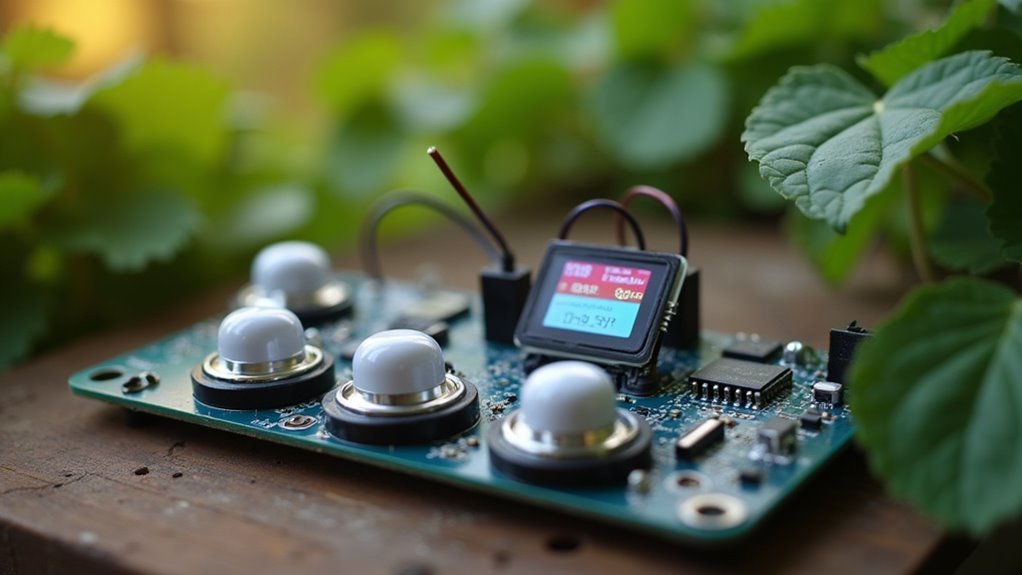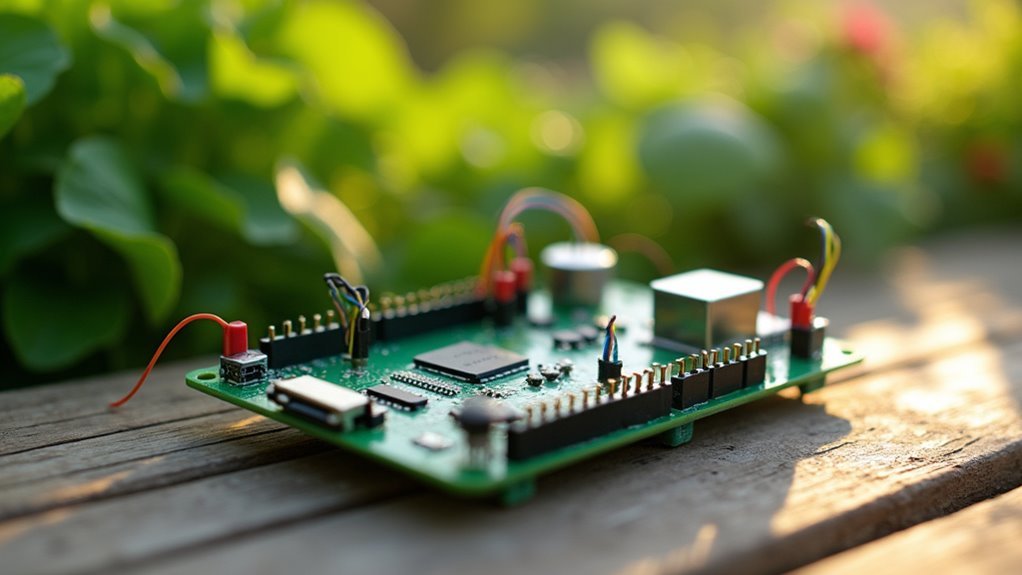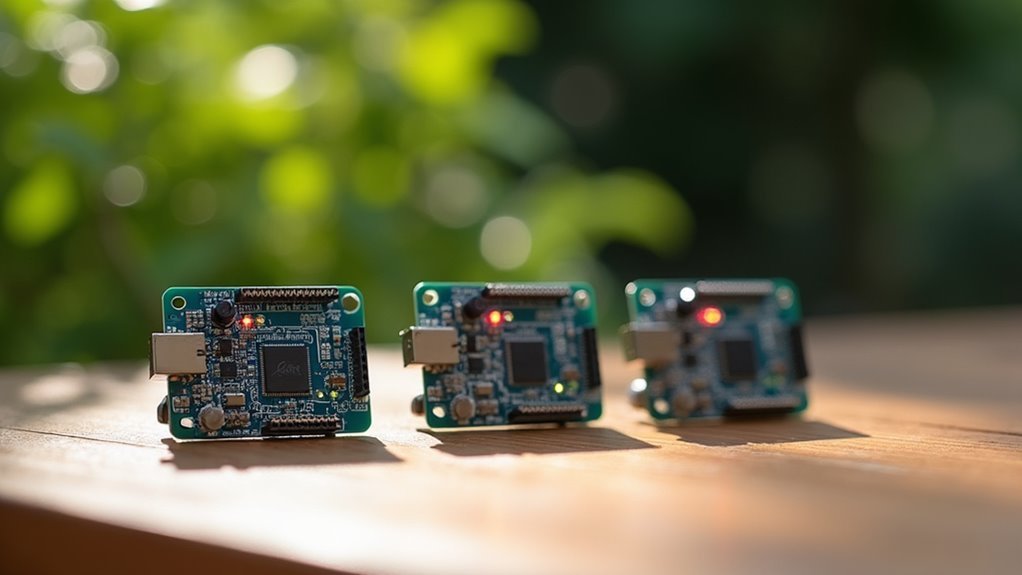You’ll need three key Arduino sensors for automatic pest detection: PIR motion sensors that detect infrared radiation from warm-bodied intruders within a 10-20 meter radius, Arduino Nicla Vision systems with 2MP cameras for automated bug counting using object detection algorithms, and ultrasonic repellent controllers that emit 20-60 kHz frequencies while integrating light-dependent resistors for UV activation. These sensors work together to provide 24/7 monitoring, immediate pest alerts, and chemical-free deterrent responses. Discover how each component transforms your agricultural pest management strategy.
PIR Motion Sensors for Real-Time Pest Movement Detection

PIR motion sensors transform your pest detection capabilities by identifying infrared radiation emitted from warm-bodied intruders within a 10-20 meter detection radius.
PIR sensors revolutionize pest detection by capturing infrared heat signatures from warm-bodied intruders across expansive 10-20 meter zones.
When you integrate these Arduino-compatible PIR sensors into your automated pest control system, you’ll achieve real-time monitoring that triggers immediate responses like ultrasonic repellent activation upon movement detection.
You’ll benefit from their energy-efficient design, allowing continuous operation without significant power consumption in agricultural settings.
This pest management approach dramatically reduces labor costs by minimizing human intervention requirements.
Your system operates autonomously, monitoring pest activity around the clock with enhanced efficiency.
Computer Vision Systems Using Arduino Nicla for Automated Bug Counting
While motion detection provides excellent real-time alerts, you’ll achieve even greater precision by implementing computer vision systems that actually identify and count specific pest species.
The Arduino Nicla Vision transforms pest monitoring with its Dual Arm® Cortex®-M7/M4 processor and 2MP color camera, enabling automated bug counting through advanced object detection algorithms.
You can train specialized models on Edge Impulse platform to target specific pests like Popillia japonica.
The system operates offline, processing images locally before transmitting only essential count data through the Arduino MKR WAN 1310, minimizing bandwidth usage.
Ultrasonic and Light-Based Repellent Integration With Arduino Controllers

Beyond detection, you’ll want to actively repel pests before they establish colonies in your crops.
Arduino-based systems integrate ultrasonic modules that emit 20-60 kHz frequencies, effectively deterring locusts and insects without chemicals.
You can enhance pest control by incorporating light-dependent resistors (LDRs) that automatically activate UV lights during nighttime, attracting and trapping pests while conserving daytime energy.
The NE555 timer module works with Arduino to generate precise ultrasonic waves for targeted pest detection and management.
By combining real-time data from sensors with automated responses, you’ll reduce labor costs considerably.
This eco-friendly approach eliminates harmful pesticides while providing dual-action pest control through both ultrasonic deterrence and UV light attraction methods.
Frequently Asked Questions
What Sensors Are Used to Detect Pests?
You’ll use PIR sensors to detect pest movement within 10-20 meters and LDR sensors to measure light intensity for day-night cycle optimization, ensuring automated pest detection and control responses.
What Is the Best Pest Control Measure?
You’ll achieve the best pest control by integrating automated systems with PIR and ultrasonic sensors, pheromone traps, and IoT technology. This approach reduces crop losses by 30% while minimizing chemical pesticide use.
What Would Be the Best Ways to Monitor for Pests?
You’ll want to use pheromone traps with automated sensors for accurate population tracking. PIR sensors detect real-time movement within 20 meters, while IoT connectivity transmits data to cloud platforms for immediate analysis.
In Summary
You’ve now got three powerful Arduino-based solutions for automated pest detection. Whether you’re using PIR sensors for movement tracking, computer vision with the Nicla for precise counting, or ultrasonic repellents for active control, you can build an effective monitoring system. Combine these sensors based on your specific needs and environment. Start with one sensor type, then integrate others as you refine your pest management approach.





Leave a Reply